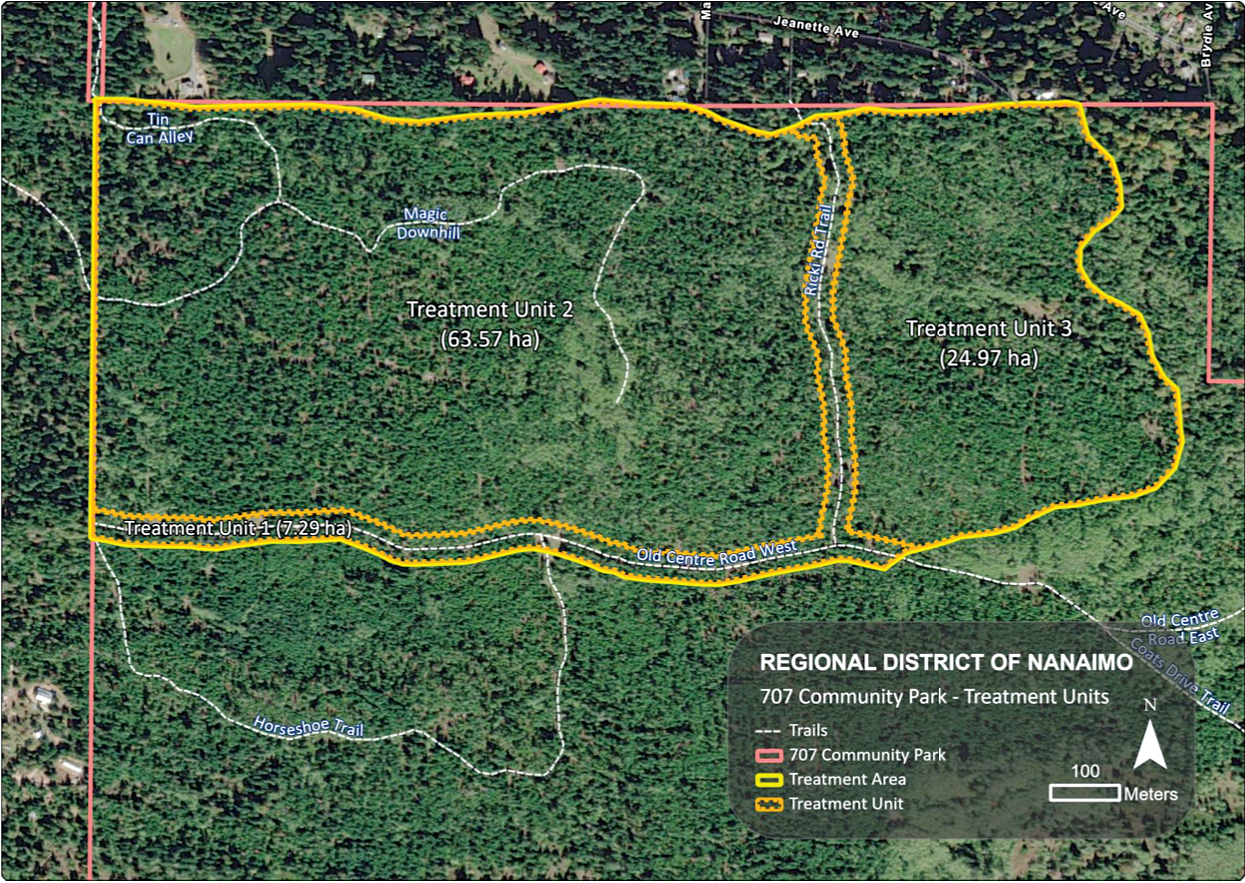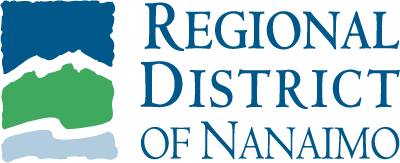Rachelle Stein-Wotten
Local Journalism Initiative Reporter, Gabriola Sounder
A prescription for reducing fire risk for the 707 Community Park is in and it recommends reducing the density of trees from 5,000 per hectare to 600.
The fuel management prescription, conducted by Diamond Head Consulting through a contract with the Regional District of Nanaimo, focuses on the northwest area of the park, considered the area at highest risk of wildfire due to the fuel characteristics – mainly vegetation type and debris – and adjacency to the highest density of homes, Conor Corbett of Diamond Head told the electoral area services committee on Feb. 3.
“There is a high potential for severe wildfire,” Corbett said calling the park a “unique situation.” The area was logged intensively in the 1990s with slash piles never removed. Diamond Head believes the area regenerated naturally and was not replanted. The area is “five to six times denser than what we would naturally see” in a forest of the same age, Corbett said.
Diamond Head determined the primarily Douglas fir stand has a density of 5,000 stems per hectare (SPH). The 88 per cent of trees per hectare recommended to be removed would focus on dead trees and undersized trees that would be outcompeted. Trees deemed to have higher wildlife value are encouraged to be retained as are deciduous trees, but the latter “will likely not be possible given the density of the stand,” the fuel prescription says.
Intended to be implemented in a phased approach, the prescription recommends the use of machinery as all debris from the felled trees should be removed. Those machines will likely create “strippy and patches remaining,” Corbett said.
“Due to the unnatural forest conditions created by historic intensive harvesting, there is considerable uncertainty regarding post-treatment vegetation response,” the fuel prescription says. “There may be a response of coniferous tree regeneration that may require a followup treatment.”
Electoral Area B Director Vanessa Craig called the report from Diamond Head “excellent” and asked if the shrub layer would be removed as part of the prescription.
Corbett said the intention is to retain the shrub layer wherever possible, but it will likely be damaged by the machinery. “We’re optimistic the shrub layer will come back.”
The recommendations were designed to minimize trail disturbance, the prescription says.
As part of the contract, the RDN requested Diamond Head to analyze risks of overnight sheltering in the park. Diamond Head recommended the RDN place a prohibition on overnight park use given the risks during the peak wildfire hazard days of the year. Currently the RDN has placed a temporary cease of sheltering in the park.
No action on the fuel management prescription and note on overnight park use will be taken quite yet.
Tom Osbourne, RDN general manager of recreation and parks, said staff intend to bring two separate reports back to the committee and board of directors with potential courses of action. Staff will start with looking for grant funding to implement the prescription.

The three Treatment Units where the fuel prescription work is proposed to happen within the 707 Community Park. Regional District of Nanaimo Image





Recent Comments